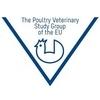Explore all the information on
Swine health
Pig diseases can be caused by bacteria, viruses, protozoa, nutritional deficiencies, poisonous substances, internal and external parasites.
Bacterial diseases include swine erysipelas, swine dysentery, infectious poly-arthritis etc. Viral and mycoplasma diseases include African swine fever, swine influenza, enzootic pneumonia of pigs, vesicular exanthema of swine, transmissible gastroenteritis etc. Helminthiasis as a health problem in pigs is mainly caused by worms like the lungworm, ascaris worm etc. Nutritional diseases include piglet anemia, parakeratosis etc. External parasitic infections include mange, lice, jiggers etc.
How to tell that a pig is in bad health:
General signs: dullness, loss of appetite, labored or rapid breathing, sudden deaths, loss of weight, low weight gain and fever usually manifested by shivering of the pig.
Signs expressed on the skin: reddening of the skin or skin discoloration, loss of hair and hardening of some parts of the skin, itching and cracking of the skin.
Other signs: lameness, cough, abnormal nasal discharges, diarrhea with a putrid smell, abnormal content and color of feces and abortions.
Rafael Frandoloso (University of Passo Fundo, Passo Fundo, Brazil) presented his research on this subject and also discussed microbiota and its influence, during IPVS2022 in Rio de Janeiro, Brazil....
Comments : 0
Recommendations: 1
Rafael Frandoloso (University of Passo Fundo, Passo Fundo, Brazil) discussed a new technology in vaccine delivery, during IPVS2022 in Rio de Janeiro, Brazil....
Comments : 0
Recommendations: 0


Enhancing Swine Reproduction by Improving Health and Reducing Oxidative Stress
Suggested link
Eduardo Cobo (University of Calgary) presented his research, highlighting the relevance of the mucin layer, and also discussed immunomodulators and microbiota, during IPVS2022 in Rio de Janeiro, Brazil....
Comments : 0
Recommendations: 0
Daniel Linhares (Iowa State University) shared his insights on indicators and methods for monitoring this disease, in this Swine It interview with host Laura Greiner....
Comments : 0
Recommendations: 0
Dan Columbus (Prairie Swine Centre and University of Saskatchewan) shared his thoughts regarding research on pigs challenged with bacterial diseases and their impacts on feed efficiency and nutrient requirements, in this Swine It interview with host Laura Greiner....
Comments : 0
Recommendations: 0
Dan Columbus (Prairie Swine Centre and University of Saskatchewan) shared insights on amino acids and energy requirements when feeding a sick pig, during this Swine It interview with host Laura Greiner....
Comments : 0
Recommendations: 1
Dan Columbus (Prairie Swine Centre and University of Saskatchewan) points out the importance of the diet regarding the ability to resist disease challenge, in this Swine It interview with host Laura Greiner....
Comments : 0
Recommendations: 0
Daniel Linhares (Iowa State University) talked about virus detection and research results on PRRS outbreaks, in this Swine It interview with host Laura Greiner....
Comments : 0
Recommendations: 0
Dan Columbus (Prairie Swine Centre and University of Saskatchewan) talked about the effect of mycotoxins, particularly Deoxynivalenol, on short and long term feed intake, during this Swine It interview with host Laura Greiner....
Comments : 0
Recommendations: 1
Panels will bring themes related to biosecurity, productivity and innovation, topics that are the foundation of the swine production in the world
With the high production costs, coming mainly from the inputs used in the manufacture of feed, efficiency in the production system is essential to generate positive balances in farms. In this scenario, the best way to achieve success is the use of innovations, to reduce costs and improve production...
Comments : 0
Recommendations: 0
1. Introduction The microbiota plays important roles on the maturation of the intestine and immune system and consequently affects the health of the host [1,2]. The physicochemical properties and the direct interaction with intestinal cells lead to a distinguishable composition of the microbiota along the gastrointestinal tract [3–5]. The microbiota in the intestinal lumen is more related to dietary compounds, whereas the mucosa-associated microbiota directly interacts...
Comments : 0
Recommendations: 0
When the urinary tract, which is usually sterile, is colonized by bacteria it results in an infection which is most often sub-clinical. A variety of endogenous and opportunistic microbes such as E. coli , Streptococcus sp., Staphylococcus epidermidis , Klebsiella sp., Pseudomonas sp., Aeromonas sp., Bacteroides sp. are natural inhabitants of the lower urinary tract and are able to cause non specific UTI....
Comments : 6
Recommendations: 0


Enhancing Swine Reproduction by Improving Health and Reducing Oxidative Stress
Suggested link
At Novus, we pride ourselves in thinking about the Earth and sustainability every day. We have the ability to make a difference, but that can only happen when we all work together....
Comments : 0
Recommendations: 4
INTRODUCTION Antibiotics have given significant contributions to the human food production chain during their almost 80 years of use. Such contributions include a reduced incidence of bacterial disease, improved animal health status, and an overall enhancement in production efficiency (1, 2). However, due to concerns of antimicrobial resistance and its consequences to human health, the entire food-producing industry is under pressure to remove antibiotics from animal production...
Comments : 0
Recommendations: 0
Main text Porcine circovirus type 2 (PCV2) was first described in 1998 [1], and since then, it has become one of the most important pig pathogens, contributing to considerable economic losses by a syndrome called porcine circovirus disease (PCVD). The virus has demonstrated the highest evolution rate among similar DNA viruses, resulting in genetic shifts even over the rather short period of time since its recognition [2]. Today six genotypes of PCV2 are known, PCV2a-f [3]. PCV2d...
Comments : 0
Recommendations: 0
Authors should pay attention to the results that will be released soon
Recognized worldwide as one of the main showcases for swine research, the IPVS2022, which takes place from June 21st to 24th, at the RioCentro, Rio de Janeiro (RJ), informs the scientific community about the final phase of the abstracts’ evaluation to be presented at the event.
To follow the conclusion of the reviewers, authors should pay attention. "Soon we will...
Comments : 0
Recommendations: 0
How does the ban change the way we look at feed formulation? Zinc oxide (ZnO) has often covered up mistakes within our piglet feed formulations. When we remove ZnO, excesses or imbalances in our formulation become visually obvious in the form of higher incidences of diarrhoea, variability within a batch, secondary diseases, higher feed costs, higher cost of production, higher mortality and more. The ZnO ban forces us to reflect on some of the often-overlooked aspects of our...
Comments : 0
Recommendations: 0
Introduction: Healthy pigs carrying Streptococcus (S.) suis on their tonsils are known to be a source of S. suis transmission in pig herds. S. suis can cause severe clinical disease, especially if co-infection with other pathogens occur. As a precautionary measure in experimental infection trials with other pathogens, pigs are treated with antibiotics to eliminate as much as potentially pathogenic bacteria as possible. The effect of cefquinome...
Comments : 0
Recommendations: 0
Introduction: This abstract describes usage of antimicrobials in Finnish swine herds in 2014. Materials and Methods: In 2014 Finnish swine health program (Sikava) collected information from its system from 1282 pig herds. This data consists of 250 519 recordings from 1204 farms. Results: The most commonly administered antimicrobial was procaine benzylpenicillin. It´s active ingredient, benzylpenicillin, was used 1199 kg. The...
Comments : 0
Recommendations: 0
Introduction: Increasing antimicrobial resistance is one of the major problems concerning both veterinary medicine and human health. There are but few reports on antimicrobial susceptibility of C. perfringens from pigs. The aim of this study was to evaluate the susceptibility of porcine isolates of C. perfringens to antimicrobial agents commonly used in swine diseases therapy. Materials and Methods: A total of 159 C. perfringens...
Comments : 0
Recommendations: 0








.jpg&w=3840&q=75)













